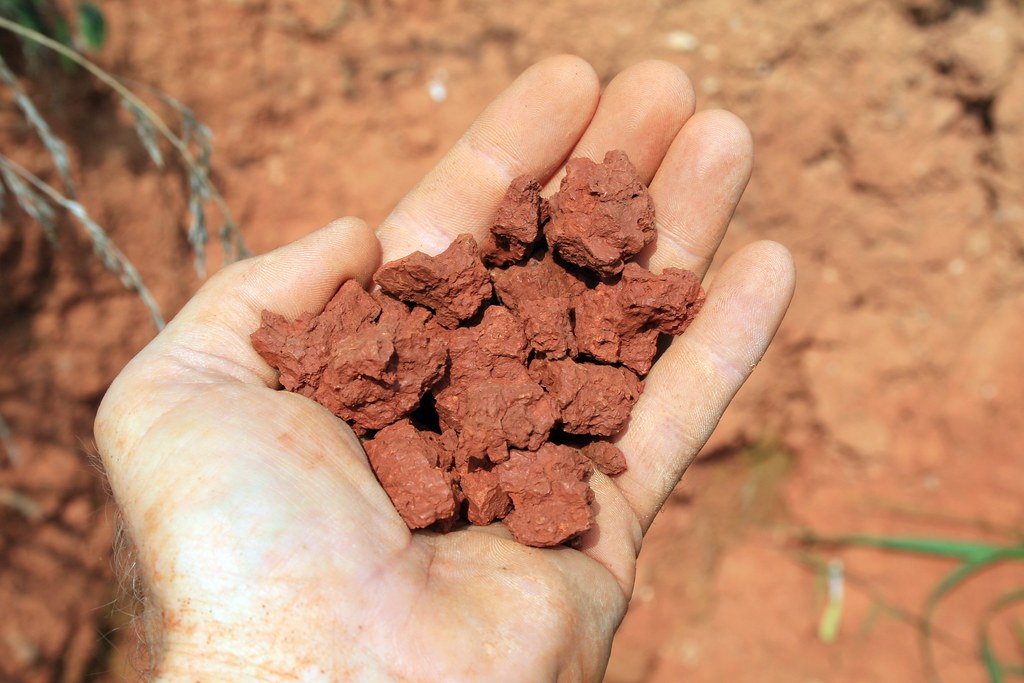What is soil?
Soil is a complex mixture of minerals, organic matter, water, air, and living organisms that cover the surface of the Earth. It is the result of the interaction between the physical, chemical, and biological processes that occur in the Earth’s crust over thousands of years. Soil formation, also known as pedogenesis, is the process by which soil is created from the weathering and erosion of rocks and minerals, and the decomposition of organic matter. Soil types in India are diverse, reflecting the country’s varied geography and climatic conditions.
What is soil formation?
Soil formation is a long process that begins with weathering of rocks into small fragments. The origin of the soil is a rock that comes in effect with different conditions or is exposed to the atmosphere by chemical and physical decomposition.
The process of soil formation also known as pedogenesis is the process by which soil is created from the weathering and erosion of rocks and minerals, and the decomposition of organic matter.
It involves several physical, chemical, and biological processes that occur over time, including:
- Weathering: The breakdown of rocks and minerals by physical, chemical, and biological processes.
- Erosion: The transportation of weathered material by water, wind, or glaciers.
- Deposition: Accumulation of sediment in a particular area.
- Organic matter accumulation: The accumulation of dead plants, animals, and microorganisms that decompose to form organic matter.
- Soil mixing: The physical mixing of soil layers by burrowing animals, plant roots, and other disturbances.
- Chemical reactions: Transformation of minerals and organic matter by chemical reactions.
All of these processes interact with each other to create the unique properties of soil, such as its texture, structure, chemistry, and biological activity. The resulting soil can used for a variety of purposes, including agriculture, forestry, construction, and habitat for living organisms.
Factors determining soil formation
There are some factors that affect soil and determine the types of soil in India.
- Topography
- Climate
- Parent Materials (rocks)
- Organisms
- Time
14 Soil Types in India and suitable crops for them
India is a large and diverse country with a wide range of soil types. The soils in India have several types based on their physical and chemical properties, as well as their formation processes. Some of the major soil types found in India are: Soil types in India.
- Alluvial Soil: These are the most common and fertile soils found in India, formed by the deposition of sediments brought down by rivers. It is ideal for agriculture and its findings are in the Indo-Gangetic plains and the river deltas.
- Suitable crops of Alluvial soils: Tobacco, Cotton, Ric, Wheat, Bajra, Sorghum, Pea, Pigeon pea, Chickpea, Grams, Soyabean, Groundnut, Mustard, Sesame, Jute, Maize, Vegetables and Fruits, etc. are suitable for this soil.
- Red Soil: This soil forms from weathered crystalline rocks and its findings are in theDeccan Plateau, the Eastern Ghats, and the Chhota Nagpur plateau. They are generally poor in nutrients but could use to grow crops such as cotton, wheat, and pulses.
- Suitable crops of Red Soil: Rice, Wheat, Sugarcane, Maize, Corn, Groundnut, Ragi, Potato, Pulses, millet, and some fruits & vegetables are suitable to grow in red soil.
- Black Soil: Also known as regur soil or black cotton soil, it forms from volcanic rocks and its findings is in the Deccan Plateau. They are highly retentive of moisture and nutrients, making them ideal for growing crops like cotton, wheat, and sugarcane.
- Crops Suitable of Black Soil: Rice, Sugarcane, Wheat, Jowar, Linseed, Sunflower, cereal crops, fruits, vegetables, tobacco, groundnut, and any oilseed crops.
- Laterite Soil: IThese are highly weathered soils formed by the leaching of nutrients and the accumulation of iron and aluminium oxides. Its findings is in the Western Ghats, the Eastern Ghats, and the plateaus of Odisha and Jharkhand. They are generally poor in nutrients and are not suitable for intensive agriculture.
- Suitable crops of Laterite Soil: Cotton, Rice, Wheat, Pulses, Tea, Coffee, Rubber, Coconut, Cashews, etc.
- Forest Soil: This soil forms in the forested regions of India and are rich in organic matter. They are highly acidic and nutrient-rich, making them ideal for growing crops such as tea, coffee, and spices.
- Crops of Forest Soil: tea, spices, wheat, maize, barley, coffee, tropical fruits, and temperate fruits, etc.
- Arid Soil: Findings of this soil is in the arid and semi-arid regions of India and has low organic matter and fertility. They are used for growing crops such as millets, pulses, and oilseeds.
- Suitable crops of Arid soil: Any drought and saline-tolerant crops such as wheat, cotton, corn, maize, millets, pulses, and barley.
- Saline and Alkaline Soil: These soils forms in the areas where the groundwater is saline or alkaline, such as the Rann of Kutch and the coastal regions of Gujarat and Andhra Pradesh. They are generally unsuitable for agriculture due to their high salt content.
Overall, India’s soils are diverse and varied, with each type having its unique characteristics and uses.
Conclusion:
In conclusion, India has a diverse range of soil types, each with its own unique physical and chemical properties that determine its suitability for different types of crops.
Therefore, understanding the different soil types and their suitability for different crops is essential for the agricultural development of India. By choosing the right crops for the right soils, farmers can maximize their yields and improve the overall productivity of India’s agricultural sector.

